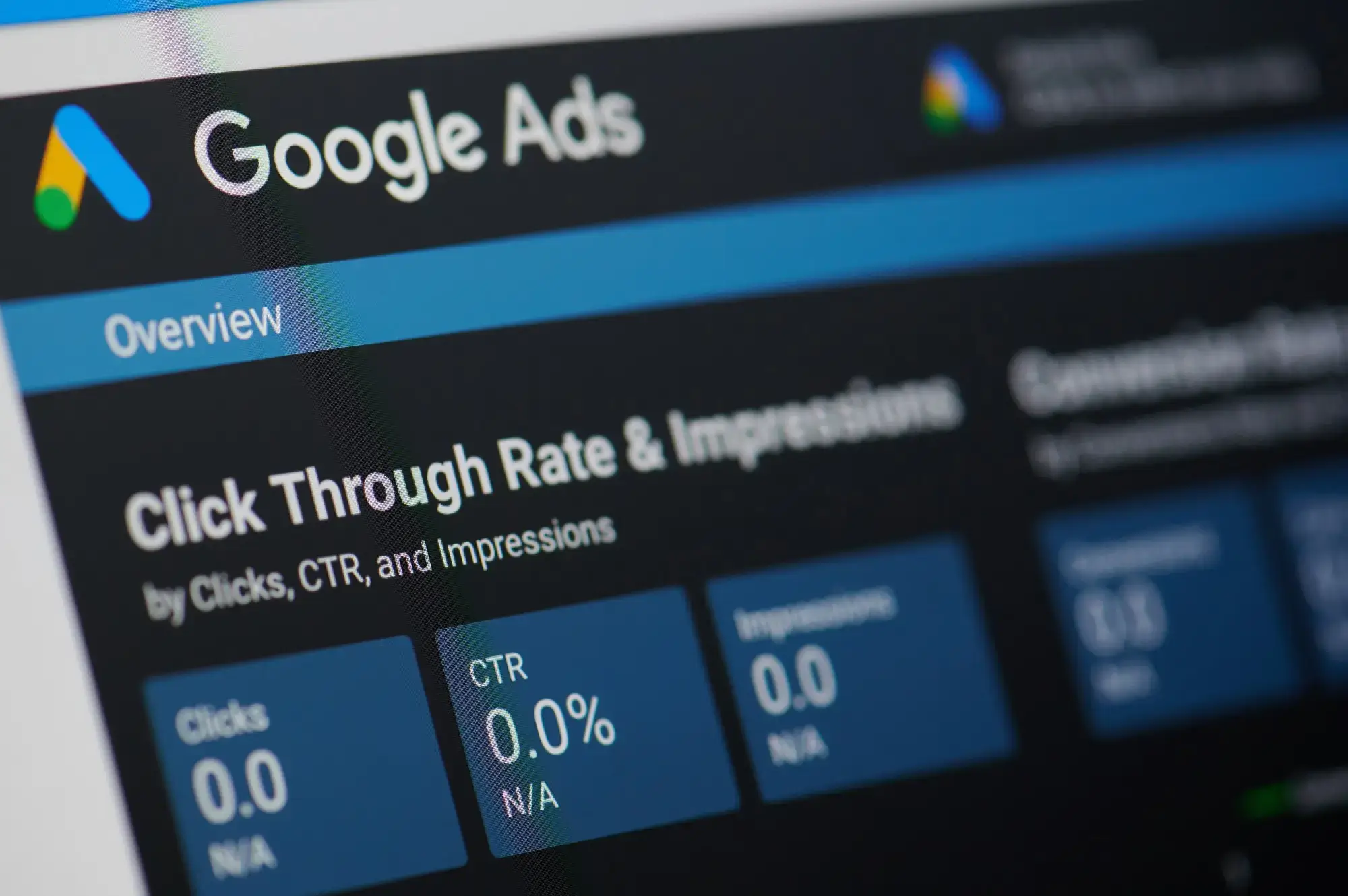If you’ve used Google Ads in the past, you’ve probably heard the term “Performance Max” floating around recently.
Google launched Performance Max campaigns in the fall of 2021, but they’ve become even more prevalent since the platform discontinued Smart Shopping campaigns in September 2022.
Performance Max campaigns use the power of AI to help you meet conversion goals. Google will automatically decipher the right audience to display your ads to for maximum conversions.
I’ll be honest: I really like Performance Max. These ads take a lot of guesswork out of setting up and running an ad campaign. I like to call them Google Ads on STEROIDS because they’re much more powerful than they seem.
I’ve had a few people ask me recently: “Rodney, I know Performance Max is where it’s at right now, but I’m just not familiar with these ads. I don’t want to waste my money.”
I’ve created this all-encompassing guide to teach you the ropes. You’ll learn what Performance Max campaigns are, how to set them up, and tips to optimize conversions with these ads.
Let’s dive in!
Decoding Performance Max
Performance Max is one of Google’s newest goal-based campaign types, and its goal is to — you guessed it — maximize performance.
Traditionally, when you create Google Ad campaigns, you can upload a few headlines and descriptions to use within your ads. Google will run different combinations of these elements and eventually start showing the best combination.
Performance Max takes this idea to the next level. In a single Performance Max campaign, you can upload:
- 15 images
- Five logos
- Five videos
- Five headlines
- Five long headlines
Using AI, Google will create high-performing combinations of these elements and display them everywhere. While standard shopping ads only display within the Search Network, Performance Max campaigns may appear on YouTube, Display, Search, Discovery, Gmail, and Maps.
Depending on your bid strategy, Google will use its self-optimizing features to maximize conversions or conversion values. It’s an almost completely hands-off approach to marketing your business.
Performance Max vs. standard ads
Performance Max offers a lot of benefits for your ad strategy. I wouldn’t go so far as to say that Performance Max ads are the only ads you should be using. There’s a lot of power in diversifying your ad campaigns, just like there is in diversifying your digital marketing strategy as a whole.

But if you have some experience using Google Ads and are ready to take your performance to the next level, this campaign type could be worth a shot. Here are the main benefits you’ll gain from Performance Max ads over the traditional Standard Shopping ads on Google:
They’re visible across more platforms
Google describes Performance Max campaigns as a way to access all your Google Ads inventory in a single campaign. While other ad types only target a few channels, like Search or YouTube, Performance Max ads are visible across all of Google’s channels. You won’t have to spend time building a new campaign for each platform, as Google’s machine-learning technology will optimize the ads displayed on each.
They optimize audience targeting
Performance Max ads use audience signals, which I discuss in the step-by-step guide below, to target ads. This feature helps your pMax ads precisely target the users who are most likely to convert. They also use contextual targeting, which gives you some control over the type of page Google displays your ads on.
They ensure total creative optimization
Google’s machine learning technology automatically optimizes all the creative assets you include in your Performance Max campaign. It will show the best-performing combinations of videos, images, descriptions, and headlines, most often to boost engagement and conversions.
They fill in the gaps from other search campaigns
If you’re currently running other Google search campaigns, Performance Max can coexist alongside these campaigns to fill in any gaps in your ad strategy. You don’t need to replace your Google Ad strategy with pMax completely; instead, I’d recommend rolling out one pMax campaign alongside your existing campaigns, monitoring performance, and making changes as necessary.
Setting up Performance Max: A quick guide
Setting up a Performance Max campaign differs slightly from other types of Google Ads campaigns. However, these ads still follow a very user-friendly process. Google will guide you through the different elements of your campaign and explain each one.
Still, it’s good to have an idea of what the setup process will look like before you begin creating your campaign. I’ve detailed the step-by-step process you’ll need to follow below:
Step 1: Select a campaign objective
If you’ve created any Google Ads campaigns in the past, this first step will look familiar to you. Google always asks you to set your campaign objective before moving forward with the campaign setup. Your objective will include the goals and settings Google offers throughout the remainder of the setup.
Choose the last objective on the list, which reads, “Create a campaign without a goals’ guidance.” Doing so will allow you to select “Performance Max” in the next step.
Step 2: Choose your campaign type
Next, Google will display all its ad types. Click “Performance Max” to move forward with your pMax campaign.
Step 3: Set your conversion goals
Now it’s time to set the conversion goals that Google will use to optimize your pMax campaign. If you don’t set any goals, Google will use data from other campaigns on your account to optimize your bid strategy and campaign performance.
Take some time to really think about your goals for the campaign. Do you want to drive more purchases? Foster new leads? You’ll want to delete any goals that aren’t essential to your campaign to avoid duplication.
Step 4: Choose your budget and bidding strategy
Performance Max campaigns offer two main bidding strategies: maximum conversions or conversion value. The one you choose depends on your campaign goals.
If you’re looking to get the best value for your ad spend, stick with maximum conversion value. Both campaigns allow you to adjust your target cost per acquisition (CPA) and target return on ad spend (ROAS) if desired.
You’ll also need to set your budget during this step. Google recommends setting an average daily budget of at least three times your cost per acquisition, but this budget may be a little higher than necessary for some. You can also start with your average CPA as your daily budget.
Step 5: Adjust the campaign settings
Your next step is to adjust a few settings, such as your target location and languages. You can also opt for Google to help you generate assets using content from your landing page, domain, and ads. For example, you can have Google scrape text from your landing page to create text assets or adjust your final URL to better match the user’s search intent.
Step 6: Create asset groups and audience signals
Finally, you will need to create the asset groups for the campaign, which is pMax’s term for ad groups or product groups.
For shopping ads, you’ll need to select the products to include in the campaign. Then, you can add the headlines, images, descriptions, logos, and videos that will make up the campaign. Google’s machine-learning technology will optimize the combinations of these assets.
You’ll also have the option to add audience signals before finalizing your campaign. While Google can automatically glean the right audience to present your ads to, adding audience signals will help streamline this process.
For each audience signal, you’ll need to specify:
- Custom segments, which are the people you’re targeting based on their search activity, visited sites, or downloaded apps.
- Your data, which are people who have previously interacted with your business.
- Interests and detailed demographics, which further denote the types of people you’re targeting
Boost conversions with Performance Max

Creating a Performance Max campaign is relatively straightforward, but it still involves a lot of choices. Getting those choices right is crucial to your campaign’s performance.
Here are a few tips to help you optimize your pMax campaign:
- Add at least one video to each campaign — even if the video is just an animation of one of your image assets.
- Set your location settings to “Presence” instead of “Presence or interest” to avoid targeting people outside your preferred location.
- Utilize audience signals to help Google understand the types of people to target. Google will use those signals as a starting point to optimize targeting.
- Monitor the Insights tab closely to learn which search categories and audience segments are performing best, then make adjustments to your campaign as needed.
Performance Max: Key takeaways

Have I convinced you to try out Performance Max campaigns yet? These innovative ad campaigns have a lot of potential to boost your conversions.
But even though Google does a lot of the work for you, be sure not to simply “set and forget” your pMax ads. Continuously monitor their performance to ensure you’re getting the best ROAS.








